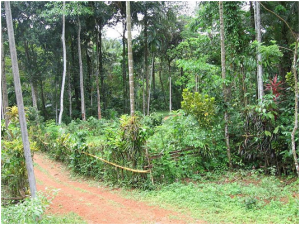Written by Rhiannon Meaden, Journal Development Editor, Agriculture & Food Security
 Home gardens can be used to alleviate hunger, malnutrition, economic hardship and disease. These are the findings of a comprehensive literature review by Galhena et al., published today in Agriculture & Food Security, which investigates the uses of home gardens in the context of food security, and specifically in post-conflict situations.
Home gardens can be used to alleviate hunger, malnutrition, economic hardship and disease. These are the findings of a comprehensive literature review by Galhena et al., published today in Agriculture & Food Security, which investigates the uses of home gardens in the context of food security, and specifically in post-conflict situations.
The use of home gardens is a longstanding and effective strategy for coping with the daily threat of food and nutritional insecurity in many developing countries. Home gardens comprise of small areas of land close to the homestead, where a  family can grow subsistence produce in order to supplement their diet, as well as to buffer socio-economic hardships. These gardens can incorporate a large diversity of agricultural practices within a small area of land. Commonly, gardens are used for growing fruit, vegetables, crops, spices, herbs and medicinal plants as well as livestock, which can provide a vital source of protein as well as additional income.
family can grow subsistence produce in order to supplement their diet, as well as to buffer socio-economic hardships. These gardens can incorporate a large diversity of agricultural practices within a small area of land. Commonly, gardens are used for growing fruit, vegetables, crops, spices, herbs and medicinal plants as well as livestock, which can provide a vital source of protein as well as additional income.
Home gardens represent an environmentally friendly and sustainable agricultural practice, which is effective at improving food security and economic stability. However, it remains important to ensure that further policies and interventions aim to encourage the most efficient and effective use of these resources, while maintaining crucial ecosystem services. In post-conflict situations, the literature is less extensive, and Galhena et al. recommend further investigation in this area in order to base policy on solid evidence.
Latest posts by Nicola Gorsuch (see all)
- Home gardens for food security - 17th June 2013
- The extent of arsenic pollution in contaminated groundwater - 31st May 2013
- Mosquito survey identifies reservoir of disease - 10th May 2013
Comments